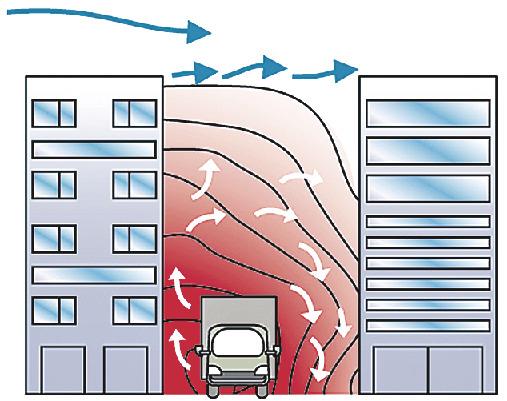Construction Technology Research Institute / Start of air pollutant concentration prediction service, quantitative prediction up to 19 hours ahead

Image of pollutant retention in the road space sandwiched between high-rise buildings (from press release materials)
The Construction Technology Research Institute announced on the 7th that it has started a service to provide information on local and short-term air pollutant concentrations based on a highly reproducible air pollution prediction model using AI. The feature is that it can be applied to road spaces sandwiched between high-rise buildings where pollutants tend to accumulate. It can quantitatively predict the generation and diffusion trends of pollutants up to 19 hours ahead. In the future, the service will be provided to road traffic administrators and others, leading to effective traffic demand management operations.
The company has built an AI prediction model based on publicly available data such as air pollutant concentrations that are constantly observed. The variation of local air pollutant concentration was reproduced with high accuracy. The prediction model can quantitatively predict the generation and diffusion trends of pollutants up to 19 hours ahead at all points where air pollutant concentrations are observed and published.
Prediction accuracy is within 0.01 ppm average error for hourly values up to 12 hours ahead. The daily average, which is a combination of the measured values up to 5:00 a.m. and the predicted values up to 19 hours ahead, has an accuracy within an average error of 0.005 ppm.
In the future, we will start a service that provides future concentrations of local and short-term air pollutants such as intersections in urban areas for road traffic managers. Road traffic administrators can operate traffic demand management based on concentration prediction of air pollutants. For example, on days when high concentrations are predicted, it will be possible to curb the excessive emission of pollutants by taking measures to protect the environment along roads or by detouring people around.
Conventional methods for predicting the concentration of air pollutants emitted by automobiles and other vehicles assume that air pollutants are sufficiently diffused in open spaces. It was difficult to apply in a semi-enclosed space with high-rise buildings lined up on both sides of the road.






